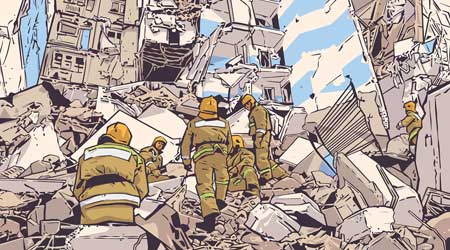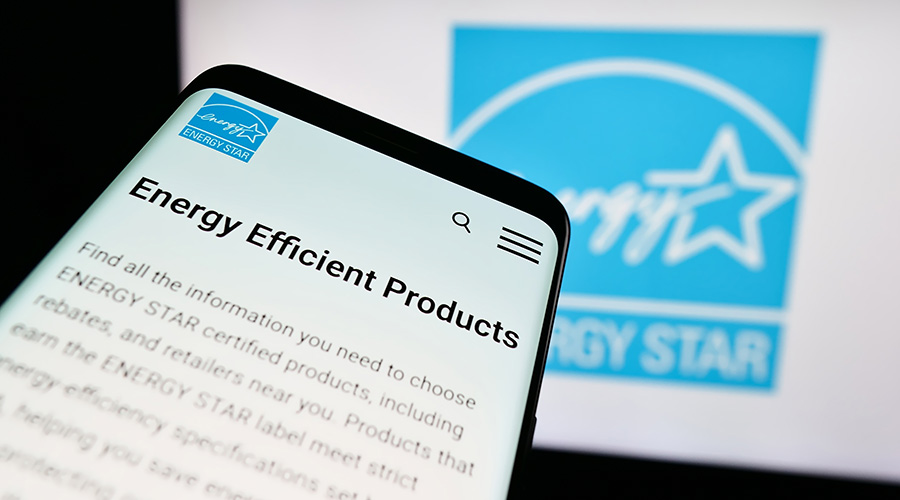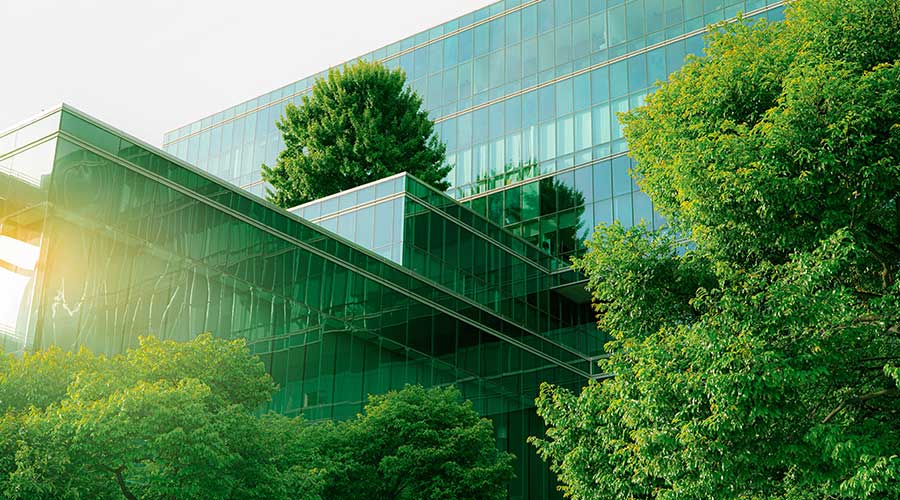With Greening Buildings, Be Sure to Consider Resilience
Resilience and green building are inextricably linked. When any major renovation is on the table, sustainability and resilience must be considered in tandem.
A trend in facilities management is the greening of existing buildings: replacing older HVAC, electrical, and other systems with modern and energy-efficient features. But what we think of as green design is only one-half of sustainability. Superstorm Sandy hit New York in 2012, lashing an area at the center of the national green building movement. The storm left more than 380,000 buildings damaged and produced more than 10 million tons of building debris. Debris that had to be hauled away in thousands of carbon-emitting trucks, was left in landfills to leach toxic chemicals into the air and water, and which had to be replaced with 10 million tons of new materials.
The other half of sustainability is resilience. Resilience is an indicator of how a system responds to shock. Systems can include communities, companies, families, individuals, and physical assets. Shocks can be chronic, such as ongoing and long-term weather, or acute, such as natural and man-made disasters. Resilience of physical infrastructure is measured in terms of its durability and capacity to remain functional or to recover quickly regardless of the type and severity of shock.
It is a common misconception that modern buildings will be “proof” against natural disasters. Modern building codes are intended to prevent collapse in the largest events, not to minimize damage and recovery time. In most cities, the overwhelming percentage of the building stock was built well before modern life safety codes were adopted. For example, in Los Angeles more than 80 percent of buildings were built prior to the advent of modern building codes.
Recent events like Superstorm Sandy and the western wildfires have made it painfully clear that it is not enough for buildings to have a low impact on the environment — the environment must also have a low impact on our buildings.
Companies and institutions that have lost their most valuable assets or their businesses in natural disasters, and cities like New Orleans that have seen their social and economic vitality diminished or destroyed realize that they must implement long-term strategies to make their future and existing buildings more resilient.
The best time to invest in resilience
The National Institute of Building Sciences (NIBS) in its seminal report, Mitigation Saves, estimates that for every dollar spent on mitigation, society sees a resilience benefit of four to seven dollars or more.
The best time to make buildings more resilient is while they are still in the design stage. The second best time to invest in resilience is when a building is scheduled for renovation or major maintenance. This can also be when an owner decides it is time to green the building to improve energy efficiency and environmental performance.
Renovations or greening of buildings often consist of re-roofing, replacing old HVAC equipment, adding solar panels, adding energy improvements such as new windows, rainscreens, and insulation, updating plumbing fixtures for reduced water usage, refreshing architectural finishes, and adding amenities. Buildings can even undergo adaptive reuse, such as turning an old factory into a new office building, a shopping mall into a distribution center, or in the new COVID reality, turning an office building into housing.
What facility managers can do
Building owners and facility managers can take some practical steps to create and implement a resilience management program:
- Create an inventory of the building, and use experienced engineering professionals to employ a building rating system to rate and rank the most important properties along the dimensions of safety, repair cost, and recovery.
- Perform cost-benefit studies to best allocate resources toward mitigation of existing facilities.
- Establish a timeline for mitigation of existing properties that considers scheduled renovations, the remaining life of the buildings, and capital and maintenance budgeting.
- Establish internal design guidelines to ensure that when existing facilities are replaced or new ones developed, they will perform resiliently in a manner commensurate with their value to the organization.
A building’s MEP systems have fixed costs to operate, maintain, and replace. These systems are constantly running, so renovations that improve efficiency have clear-cut financial returns — if investments are made to reduce energy consumption, the annual financial benefit is practically guaranteed. Managers should be thinking similarly about those systems that only come into play in severe events like hurricanes or earthquakes. With these events it is only a matter of when, not if, they will occur.
Much of the built environment was constructed before modern codes that require building structural and nonstructural systems to resist extreme hazards. Facility managers can expect severe financial losses, business interruption costs, and in the worst case, casualties. Just as it is financially prudent to replace or upgrade inefficient or outdated MEP, roofing, and other building systems, it is good for business to improve systems that protect the building from natural hazards. It means fewer costs to repair, less damage to contents, less down-time after an event, and less loss of life.
Evan Reis is a California structural engineer and executive director of the U.S. Resiliency Council. He works with public and private organizations to promote resilience and improve the performance of the nation’s infrastructure in natural disasters.
Randy Collins is a California structural engineer and principal and founder of FTF Engineering in San Francisco.
Related Topics:














